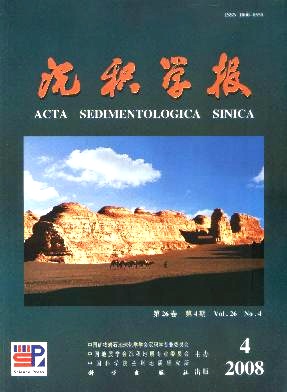Discussion on Depositional Characteristics and Basin Quality in Kunlun Orogenic Belt During EarlyMiddle Devonian
- Received Date: 1900-01-01
- Rev Recd Date: 1900-01-01
- Publish Date: 2008-08-10
-
Key words:
- Kunlun Orogenic Belt /
- EarlyMiddle Devonian sedimentation /
- backarc foreland basin /
- peripheral foreland basin /
- tectonic evolution
Abstract: The basic tectonostratum pattern of Kunlun Orogenic Belt, which was the product of oceancontinent transformation and collisional orogeny during Early Paleozoic and Late Paleozoic, was developed on the basis of Paleozoic. The Caledonian collisional orogeny, at the end of Early Paleozoic, made the Early Paleozoic ocean basin close and the whole Kulun area was uplifted to be land. As a sedimentary response to orogeny, the sediments of EarlyMiddle Devonian foreland basin formed at the piedmont area within the suture zone. The EarlyMiddle Devonian of East Kunlun mainly distributes in Middle Kunlun and Southern Kunlun. The northern part has sediments formed in the environment of abyssalbathyal basin, shallow sea shelf and sealand transition facies while the southern part is littoralneritic. The sediments are characterised by wedge shape which becomes thinner from north to south in 3D space. They display characteristics that the environment once changed from abyssalbathyal to shallow sea shelf finally to sealand alternation facies in temporal sequence, which reflect that the basin became shallower upward. The material sources were mainly from the northern part, namely the Early Paleozoic Orogenic Belt of Northern Kunlun, the southern part was secondary source area. Because the sediments developed on the subduction landmass, at the end of Silurian when Qimantage ocean basin had closed, they reflect that they have peripheral foreland basin sedimentary characteristics. In West Kunlun, the Middle Devonian only developed in the northern part, while the southwest was mainly abyssalbathyal basin sediments and the upper developed littoralneritic sediments, the northern part and the southern margin of Tarim basin developed littoralneritic sediments. These sediments are wedgeshaped in 3D space becoming thinner from southwest to northeast. In temporal sequence, their sedimentary environment changed from abyssalbathyal to shallow sea to sealand alternation finally to land facies. They also reflect that the basin became shallower upward. The material sources were mainly from southwest orogenic belt, while the Tarim ancient land in the northeast was secondary source area. Considered that the strata developed in the northern part of Middle Kunlun magmatic backarc, at the end of Ordovician when Kudi ocean basin had closed, it can be concluded that the sedimentary environment is backarc foreland.
| Citation: | CHEN Shou-jian. Discussion on Depositional Characteristics and Basin Quality in Kunlun Orogenic Belt During EarlyMiddle Devonian[J]. Acta Sedimentologica Sinica, 2008, 26(4): 541-551. |






 DownLoad:
DownLoad: